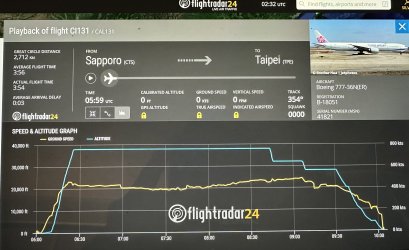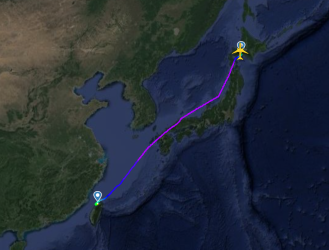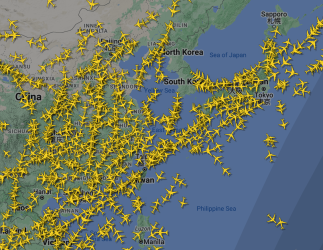This is mostly a FR24 question, but relating to pilot's experience & opinions on it.
On the evening of the 8th, flying CTS to TPE on a B777, it was pretty bumpy almost the entire 4 hour trip. As in, if you were standing in an aisle you would need to hang on with both hands for maybe 1/4 of the time, hang on with one hand for most of the rest. The seat belt sign stayed on the whole journey.
After we levelled out, we were just skimming the top of (I think) the main coughulous/strato-form cloud layer - there was some thin high-level cirrus-type above. As the bumps continued, I wondered why they were persisting at the cloud interface and not seeking some calmer air.
Over the next few hours, when I peeked out the blinds I noticed first we had risen above the main cloud layer (I can only say 'by a fair way' - quite a wide field of view down to the tops) but the bumps continued. Other times we were closer to the cloud top and then higher again. Apologies for the non-technical vagueness.
I was surprised to see on the FR24 trace that there appeared to be no change in altitude during main cruise, while there was quite a bit of resolution on the ground speed trace.


So, some questions, please.
* Is the flat altitude trace reality, or does FR24 assume a bit? If the flat trace is true then I guess the clouds were rising and falling
* In general, what flexibility is usually available to go to a new flight level in search of calmer air? Its a busy route; this taken about the same time of day

* Is the speed trace what you would expect in a turbulent atmosphere?
* Is the cloud top a particularly bumpy place to be, in general? Not talking about thunder-type clouds


















